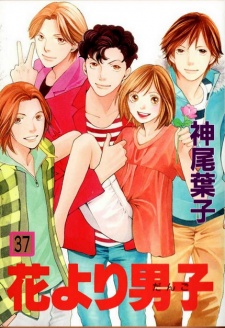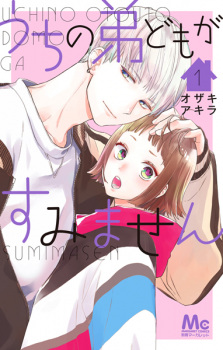Jun 14, 2021
Story: 6 Art: 7 Character: 6 Enjoyment: 7 Overall: 6
A quick disclaimer before I start: because I was unable to gain access to a full English translation, I had to read the last 3/4 of the manga in Spanish. Although my Spanish comprehension and speaking skills are okay, they do not compare to my knowledge of the English language. In other words, I may have missed some finer details, so please take this review with a grain of salt.
Without further ado, let's begin. Just in case I say too
...
much, I'll warn you that there may be minor spoilers in this review. I'm also basing this review on how well the manga holds up when examined through a critical lens instead of on how much I enjoyed it.
I suppose I should begin by saying that "Kedamono Kareshi" is not an innovative manga with a deep storyline or profound social commentary on the author's part. In fact, it is much like any other typical shoujo manga series. Now, this doesn't make it better or worse, that's just the way it is. As a result, it should not be surprising that the plot revolves pretty much solely around Himari Kiritani's evolving relationship with Keita Oogami.
It's worth mentioning that this relationship really begins to take off after Keita and Himari officially become stepsiblings (note: they are not related by blood), so if that is something that makes you uncomfortable, I think that it may be a good idea to skip this series. I was curious about how the author would approach such a controversial kind of relationship, so I decided to give it a chance.
Overall, it developed much like I expected. Keita and Himari had to go through a lot of challenges in order to keep their relationship going, which was expected. What I did not like, however, was how Himari approached the situation. Granted, she was put in an extremely difficult position, especially since she already liked someone else, so I don't blame her for being indecisive and anxious about the whole relationship. However, what bothered me is how she kept repeating to herself that she was family with everyone (including Keita), which was really... odd. At that point it was obvious that her relationship with Keita was no longer platonic, and yet she still seemed to be clinging to such an out-of-place idea. It didn't make much sense to me. She also kept saying that she'd be honest with her feelings, but then would keep backtracking right afterwards. I'm not sure if this was an intentional choice on the author's part or just poor character writing, but I believe that it should have been made a lot clearer whether it was intentional or not. As it is, I didn't dislike Himari as a character; she just behaved a bit unrealistically occasionally.
As for Keita, he really grew on me throughout the series, even though he initially seemed to be nothing more than a two-dimensional bad boy type. At first, he came across as somewhat insensitive and forceful, which made me uncomfortable. Despite this, throughout the series, Keita softened considerably and became much more caring towards Himari. I really appreciated this, as not only did it make sense within the context of the manga, but it also made him a much more likeable character. It reminded me a bit of "Koe no Katachi" in that aspect, since it was noticeable that he was doing his best to move past the immature version of himself that he used to be. I think that this character development was the reason why he ended up being my favorite character.
What about the other characters? Well, there weren't many, which I feel like was a bit of a weak point for the manga - mostly because the other characters weren't developed very well despite there being so few of them. There was Ryou Saeki, who acted as the typical nice guy and was also Himari's first love. Then there was Kuroda (I've forgotten his full name, unfortunately, since I don't think it was mentioned very much), who was very similar to Keita (as Himari points out). She also seemed to have made a few friends by the end of the manga, but I don't think their names were ever given (same situation with Keita's friends). Besides Keita and, I guess, Himari as well, I would argue that none of these mentioned characters experienced any character development (developing a crush doesn't count in my book). This was likely because they played only minor roles in the story. Although a lack of development could make sense because of that, it was still rather disappointing. Additionally, their relationships with Himari - more specifically, Ryou and Kuroda's relationships with her - turned rather... uncomfortable at certain points, which made it seem as if they were experiencing character regression rather than development. Long story short, if you're hoping to see some intricate side character plots, backstories, or interactions here, you will be let down.
In spite of all of this, I enjoyed the art style. It was very detailed and clearly had a lot of work put into its development. I did have a moment though where I mistook Kuroda for Ryou. In other words, there was some minor deficiency in variety of character design, at least for the side characters. Regardless, the art was great and of high quality, which made reading this manga much more worthwhile.
There are only two other things that bothered me about this series. The first is how Himari had barely any time to interact with Keita before she became his stepsister and subsequently fell in love with him. I think it would have been a lot more interesting if she had time to fall for him BEFORE he became her stepbrother, since it would have provided the author with a better opportunity to comment on how social norms shape or break our relationships with different people. For example, Himari's mother could have gotten a new job near Himari's childhood home, forcing them to move back and Himari to begin attending Keita's school. Instead, Himari and her mother moved back because the latter developed a relationship with Keita's father. I don't believe the latter plotline to be unrealistic; rather, I only think that it constrained what the story could have been otherwise.
The final thing that bothered me was how quickly everything was resolved at the end (you'll see what I mean when you get there). There was a lot of buildup, of course, but the way it played out was unrealistic and anticlimactic. Some details also remained improperly addressed (like the whole bit with Keita's dog). If you consider the idea of Chekhov's Gun (all mentioned details must contribute to the story in some way), the author's decision not to develop certain features of the plot was odd. I'll avoid going any further into depth since that would spoil the story, so I think that this is a sufficient comment on the matter.
Overall? Despite having pointed out quite a few (in my opinion) flawed instances that occur throughout the story, I don't think that this manga is "bad" or anything like that. It's just a typical shoujo romance (typical if you forget about the whole stepsibling thing, I suppose) that played out much as I expected it would. All in all, my best advice for reading this is to not go into it with high expectations. As long as you do that, it is likely to be an enjoyable read. Worst-case scenario, all it'll be is a good way to kill time.
Reviewer’s Rating: 6
What did you think of this review?
Nice
 0
0
Love it
 0
0
Funny
 0
0
Confusing
 0
0
Well-written
 0
0
Creative
 0
0Show all

 (1).png)






















